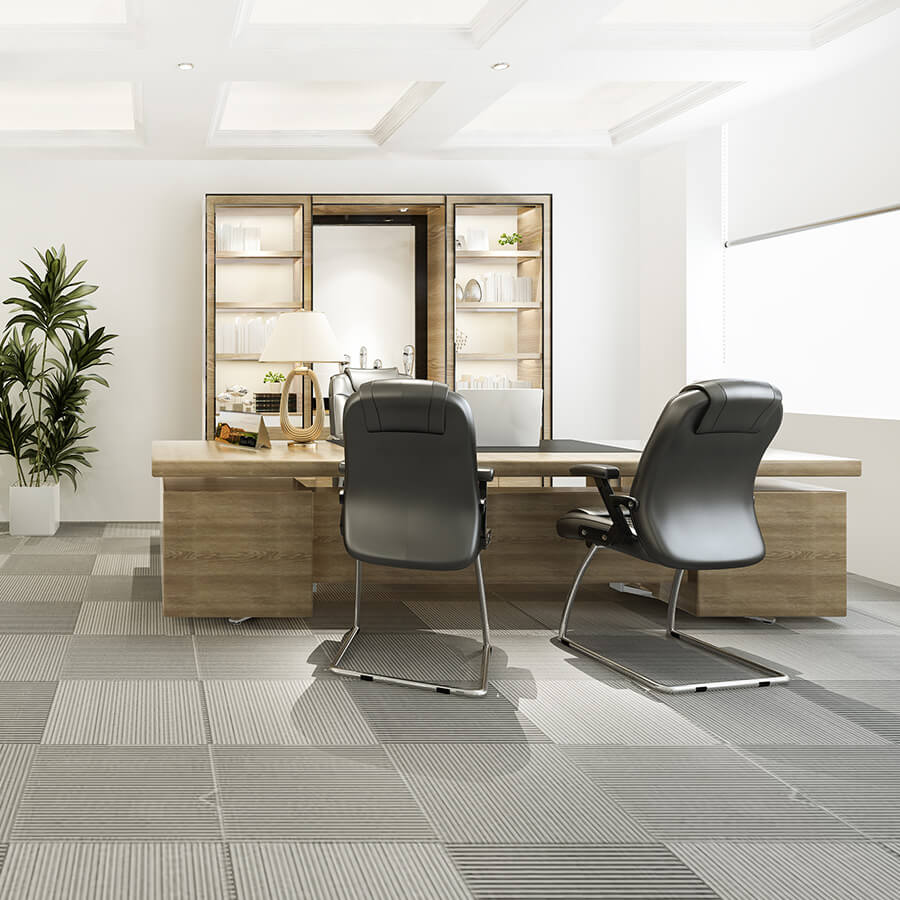The Role of Ergonomic Design in Modern Workplaces Across the UAE
Published on August 20, 2025
In today’s competitive business environment, workplace design goes far beyond aesthetics. Companies across the UAE are recognizing the importance of creating spaces that not only look professional but also support employee health and performance. Ergonomic design has become central to this transformation, ensuring that workplaces are both functional and comfortable. By prioritizing ergonomics, businesses can foster productivity, improve staff satisfaction, and reduce long-term health issues among employees.
Understanding Ergonomic Design
Ergonomics is the science of designing work environments to fit the needs of the people who use them. In office spaces, this means creating furniture layouts, lighting, and spatial arrangements that reduce strain, improve posture, and enable efficient workflows. In the UAE, where the demand for modern and dynamic work environments is growing, ergonomic design is now considered a cornerstone of effective workplace planning.
The Shift Towards Employee-Centric Workspaces
Modern organizations understand that employees are their most valuable assets. A poorly designed office can lead to fatigue, stress, and long-term health problems, which in turn impact productivity. By integrating ergonomic design, companies create environments where employees feel supported and valued.
Adjustable chairs, height-appropriate desks, and strategically placed monitors are some of the most common features of ergonomic workplaces. These small adjustments can make a significant difference in preventing issues like back pain, eye strain, and repetitive stress injuries.
Ergonomics and Productivity
Studies consistently show that comfortable employees are more productive. In offices across the UAE, businesses are turning to ergonomic solutions to optimize workflows. For example, collaborative spaces are being designed with flexible seating arrangements that promote interaction, while private areas provide focus and concentration.
By aligning office layouts with ergonomic principles, businesses can reduce downtime caused by discomfort and increase overall efficiency. This directly contributes to higher performance and better outcomes.
Ergonomic Furniture and Technology
Furniture is one of the most critical elements of ergonomic design. Modern office chairs with lumbar support, sit-stand desks, and keyboard trays tailored to individual needs are now widely adopted. Alongside furniture, technology integration also supports ergonomics.
Tools such as adjustable monitor arms, noise-canceling systems, and improved lighting solutions help create healthier and more adaptable workplaces. In a region where businesses are increasingly investing in employee well-being, these elements have become standard in new office designs.
Ergonomics in Collaborative Spaces
Collaboration is a vital part of modern business culture. However, traditional meeting rooms often fail to accommodate long sessions comfortably. Ergonomically designed collaborative spaces in the UAE now include adjustable furniture, comfortable seating, and proper ventilation to keep employees engaged during teamwork activities.
Additionally, open-plan layouts are being enhanced with ergonomic elements to balance interaction with comfort, ensuring that teams can collaborate effectively without sacrificing individual well-being.
Cultural and Regional Considerations
The UAE is home to a diverse workforce with employees from different cultural backgrounds. Ergonomic design in this context requires sensitivity to varying needs and preferences. For instance, flexible seating arrangements accommodate different working styles, while thoughtfully planned breakout areas support cultural inclusivity.
The growing demand for professional workplace design has also increased reliance on expert services. Businesses often turn to interior design consultancy Abu Dhabi firms that specialize in blending ergonomic principles with cultural and corporate identity. These consultants bring valuable expertise in adapting global trends to local contexts.
Long-Term Benefits of Ergonomic Design
Investing in ergonomic workplace design yields long-term advantages for businesses. Reduced employee turnover, lower healthcare costs, and improved morale are some of the most significant benefits. Ergonomics also plays a role in attracting top talent, as professionals increasingly seek companies that prioritize employee well-being.
By integrating ergonomic design, companies in the UAE also align themselves with sustainability goals. Ergonomically designed furniture often incorporates durable, eco-friendly materials that reduce waste and contribute to long-lasting value.
The Role of Fit-Out Services
Implementing ergonomic principles requires careful planning and execution. This is where professional expertise becomes invaluable. Businesses increasingly rely on interior fit-out services in Dubai to deliver ergonomic workplaces tailored to specific requirements. These services ensure that design strategies are not only visually appealing but also scientifically aligned with human needs.
Fit-out specialists manage the process from space planning to final installation, incorporating ergonomic principles into every aspect of the workplace. This comprehensive approach ensures that businesses benefit from a workspace that enhances comfort, efficiency, and long-term growth.







 sales@mattermind.ae
sales@mattermind.ae +971 54 236 5212
+971 54 236 5212 +971 25653070
+971 25653070 +971 50 2525 180
+971 50 2525 180

